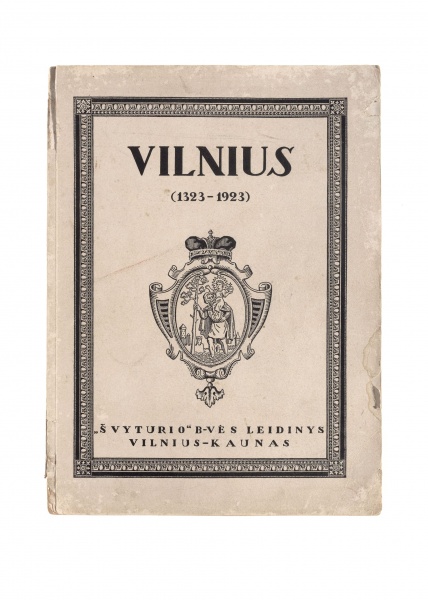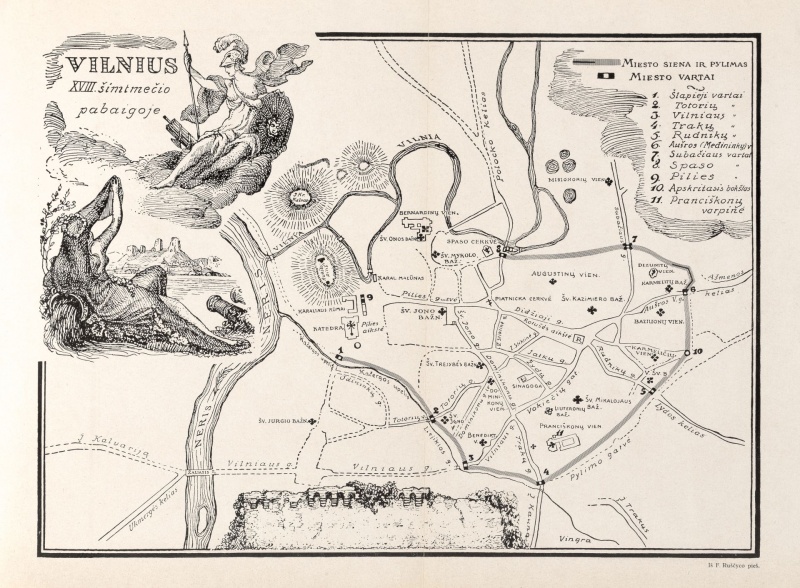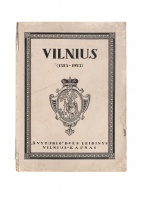

Vilnius 1323–1923
| Authors: |
Kazys Binkis (1893–1942) Petras Tarulis (1896–1980) |
| Created: | 1923 |
| Dimensions: | 33 × 24.50 cm |
In the interwar period, Lithuanians were cut off from their historical capital and could learn about it only from the press. On the occasion of the city’s 600th anniversary, the album Vilnius 1323–1923 was published. The authors of the foreword were the leaders of the Keturi vėjai (Four Winds) movement, Kazys Binkis and Petras Tarulis. Lithuanian guides began to be written in the late 1930s. In 1937, Adomas Juškevičius (1905–1999) and Juozas Maceika (1904–1991) published the guide Vilnius and Its Environs. Both of them were graduates of Stephen Báthory University, Maceika worked as a tourist guide, and Juškevičius took part in the activity of the Lithuanian Scientific Society. The guide presents general information about the city and its short history, and separate chapters introduce its streets, notable buildings, prayer houses, cemeteries, and environs. The authors were keen on showing the Lithuanian character of Vilnius and places related to the national revival of the early 20th century. The Polish authorities confiscated the entire print run of the publication and filed a suit against its authors for disclosing military secrets (bridges).
In 1938, when Poland and Lithuania established diplomatic relations, tours to Vilnius began to be organized. The journalist Jonas Vytautas Narbutas (1911–1968) published a booklet titled A Guide Around Vilnius in 1939 in Kaunas. It contains a short presentation of the city, and a half of the text consists of a list of Lithuanian-Polish street names prepared by Mykolas Biržiška.
Text author Laima Laučkaitė
Expositions: ‘Vilnius Forever. A Dialogue of Artworks and Guides to the City’, 25 May 2022 – 30 April 2023 Lithuanian Art Centre TARTLE (Užupio St. 40, Vilnius). Curator Laima Laučkaitė.








